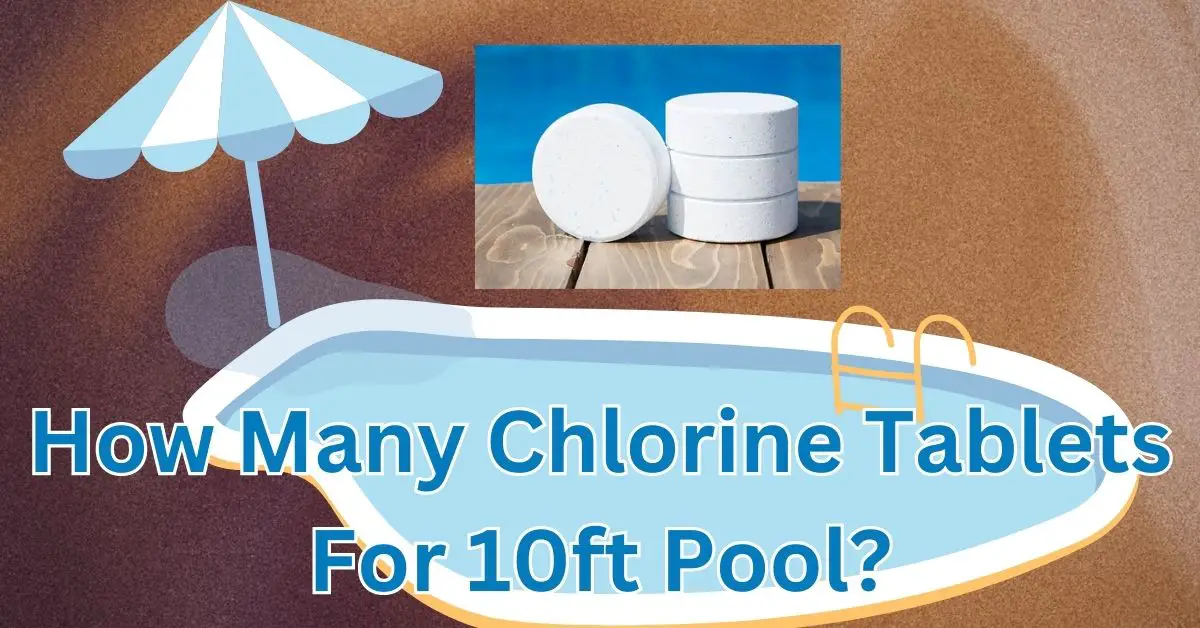Keeping your pool clean and properly maintained is essential for the health of your family and the longevity of your pool. One of the most important aspects of pool maintenance is ensuring the right amount of chlorine is added to the water. In this blog post, we will be discussing how many chlorine tablets for 10ft pool, and the factors that affect the amount of chlorine needed.
Understanding Chlorine Tablets
Chlorine tablets are a popular and convenient way to sanitize pool water. These tablets are designed to dissolve slowly and release chlorine over time, which helps to kill bacteria and other harmful contaminants in the water.
There are different types of chlorine tablets available, including stabilized and unstabilized tablets. Stabilized tablets contain cyanuric acid, which helps to protect the chlorine from the effects of sunlight.
Unstabilized tablets do not contain cyanuric acid and are more suitable for indoor pools or pools with a cover. Chlorine tablets work by releasing hypochlorous acid, which is a powerful disinfectant that can kill bacteria and other contaminants in the water. This acid is effective at killing a wide range of microorganisms, including algae, viruses, and bacteria.
However, it is important to note that chlorine tablets can also be dangerous if not handled properly. Always follow the manufacturer’s instructions and take the necessary precautions when using chlorine tablets.
Determining the Number of Chlorine Tablets for a 10ft Pool
Determining the number of chlorine tablets needed for a 10ft pool is a crucial aspect of pool maintenance. The amount of chlorine required for a 10ft pool will depend on several factors, including the pool volume, bather load, weather conditions, and chlorine demand.
The first step in determining the number of chlorine tablets needed for a 10ft pool is to calculate the pool volume.
This can be done using the formula: length x width x average depth x 7.5.
For example, if your pool is 10ft in diameter and has an average depth of 4ft, the pool volume would be 1,885 gallons.
Once you know the pool volume, you can refer to the manufacturer’s instructions on the chlorine tablet packaging to calculate the recommended dosage of chlorine.
Generally, one chlorine tablet per week is sufficient for a 10ft pool. However, it is important to note that this dosage may vary depending on the other factors mentioned above.
Bather load is an important factor that can increase the demand for chlorine. The more people that use the pool, the more chlorine will be required to keep the water properly sanitized. It is important to adjust the amount of chlorine accordingly based on the number of people using the pool.
Weather conditions can also affect the amount of chlorine needed. Heat and sunlight can increase the demand for chlorine, as they can cause chlorine to break down more quickly.
Therefore, it is important to monitor the pool water regularly and adjust the amount of chlorine as needed based on the weather conditions.
Chlorine demand refers to the amount of chlorine required to kill bacteria and other microorganisms in the water. This can vary depending on the quality of the water and the presence of contaminants. Regular testing of the pool water is recommended to ensure that the chlorine levels are within the safe range.
If the levels are too low, additional tablets can be added, and if the levels are too high, diluting the water with fresh water can help.
In summary, determining the number of chlorine tablets needed for a 10ft pool requires consideration of several factors, including the pool volume, bather load, weather conditions, and chlorine demand.
Tips for Using Chlorine Tablets
When using chlorine tablets, it is important to take safety precautions to avoid skin and eye irritation. It is also important to keep the tablets out of reach of children and pets.
Chlorine tablets should be added to the pool skimmer or a floating dispenser, as adding them directly to the pool can cause staining and damage to the pool liner. Regular testing of the pool water is also recommended to ensure that the chlorine levels are within the safe range.
If the levels are too low, additional tablets can be added, and if the levels are too high, diluting the water with fresh water can help.
Conclusion
In conclusion, maintaining the proper chlorine levels in your pool is crucial for the health and safety of your family. By understanding the factors that affect the amount of chlorine needed, you can ensure that your 10ft pool is properly sanitized.
Remember to always follow the manufacturer’s instructions when using chlorine tablets, and take precautions to protect yourself and your loved ones.
Using the tips and techniques discussed in this blog post, you can enjoy a sparkling clean pool all summer long.
